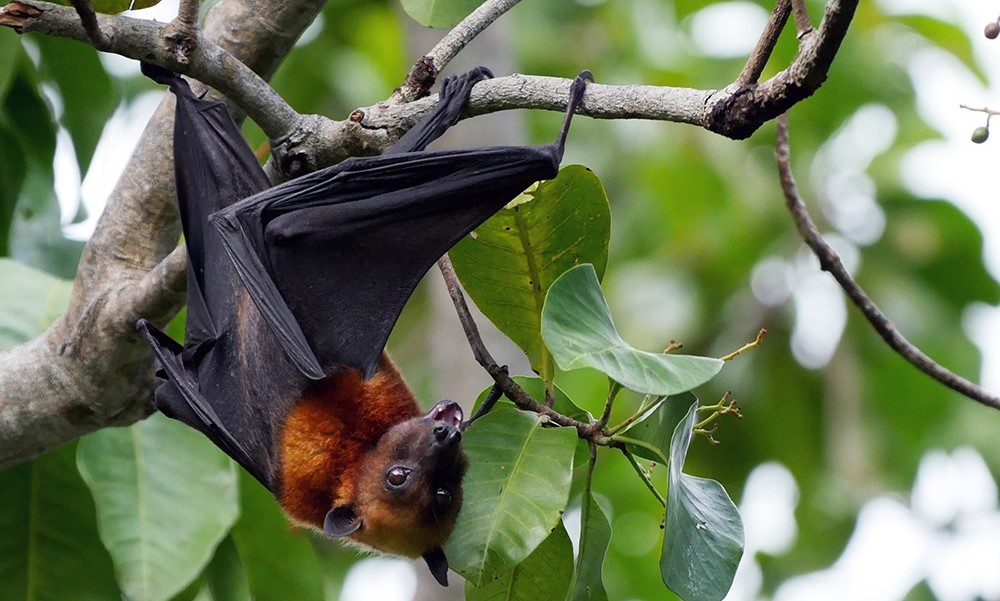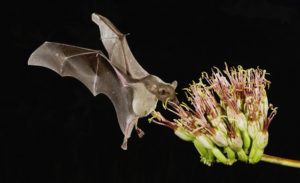In Celebration of Bats
Bats are so cool, there are three holidays honoring them: Bat Appreciation Day on April 17th, International Bat Week from October 24-31, and Bat Appreciation Month in October. So here are some spooky, but true, facts about bats of the world!
•Flying foxes (seen above and below) are the world’s largest bats, with a wingspan of up to 6 feet! Though flying foxes may look scary, they are harmless and serve a vital function in their rainforest homes as pollinators and seed dispersers for many native tropical trees.
• Flying foxes and other fruit bats may appear intimidating due to their large size, but they pose little threat to humans. They are gentle frugivores; feeding on fruits, as well as flowers, leaves, pollen, and nectar. To hydrate, they swoop down over the water and then after landing, lick the water from the fur on their belly. They also drink by licking dew from leaves.
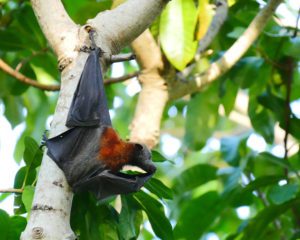
This bat appears to be deep in thought!
•The bumblebee bat is the world’s smallest, about the size of your pinkie fingernail.
•There are 3 species of bats that feed on the blood of other animals: the common vampire bat, the hairy-legged vampire bat, & the white-winged vampire bat. All vampire bats reside in Latin America, and indeed I have personally seen fresh, bloody bite wounds on horse’s necks from the nocturnal feedings of these hungry bats.
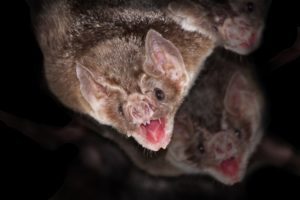
Common vampire bats
• There are over 1,330 species of bats, in fact, they are the second most diverse group of mammals on earth. New species continue to be discovered, so the number is growing!
• While not exactly immortal, many bat species can live 30 years or more.
• Bats can fly up to 60 miles per hour.
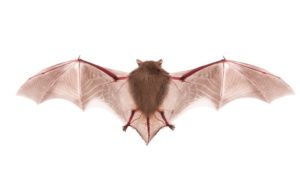
Bats are the only mammals with true flight
• These creatures of the night can locate food in total darkness by emitting high-pitched sounds and listening for the echoes.
•Other species, like those in the fruit bat family, don’t use echolocation, relying instead on their large eyes and sense of smell for locating the scent of the sweet, ripe fruit they dine on.
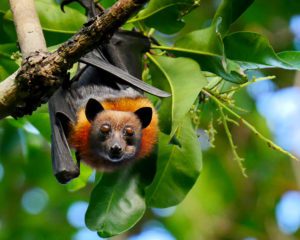
Flying foxes have large eyes and ears
• Baby bats are called pups & mama bats can find them among thousands of others by their unique voice & scent.
• Some bats fly south for the winter, while others hibernate. Hibernating bats can survive freezing temperatures, even encased in ice!
• Many species are endangered due to loss of habitat, as well as a fungal disease called white-nose syndrome.
Bats Play Vital Ecological Roles
• INSECT CONTROL: Bats are able to consume their body weight in insects each night, making them a great natural source for mosquito control!
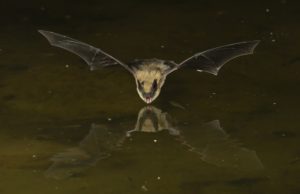
Big Brown Bat catching insects over pond
• POLLINATION: Other bats eat fruit or nectar and therefore aid in pollination. Tropical fruit species including bananas, mangoes, and guavas depend upon bats as their pollinators, as does the agave and iconic saguaro cactus in the Sonoran Desert.
• SEED DISPERSAL: Tropical fruit-eating bats are vital in dispersing the seeds of the plants they eat, far and wide across the tropical rainforest habitats in which they live.
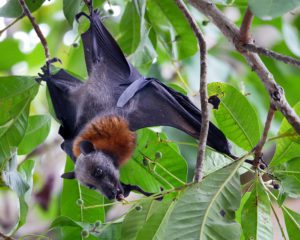
Flying fox eating fruit
Bats Face Many Challenges
The International Union for the Conservation of Nature (IUCN) lists +24 of the world’s bat species as Critically Endangered, +53 others are Endangered, and +104 bat species are considered Vulnerable (as of 2019).
Threats include many of the same ones facing other mammals; like habitat loss and pesticide exposure, competition and predation by non-native species, and climate change. They are also killed during the mining of guano in the caves they inhabit, killed by wind turbines, killed due to misguided myths, hunted for ‘bushmeat’ and traditional medicine, and from diseases like White-nose Syndrome.
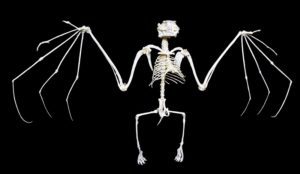
Skeleton of a fruit bat
My Adventures with Bats
I’ve been lucky to see bats in many parts of the world; from Texas, viewing millions of Mexican free-tailed bats, to Central America where I’ve seen the wounds on livestock from vampire bats, to Borneo’s Gomangtong Cave with its +100,000 wrinkle-lipped free-tailed bats, to my favorite bat of all time; the Honduran white bat seen below.
The Honduran white bat (Ectophylla alba), is also called the Caribbean white tent-making bat. They are found not only in Honduras but also in Nicaragua, Costa Rica and Panama. They are characterized by having distinctive, entirely snow-white fur, which is only found in six of the roughly 1,300 known species of bat.
Notice the yellow-orange coloration of its ears, nose, and lips. Recently, scientists discovered that the color originates from carotenoid pigments ingested from the bat’s primary food source – the fruits from a particular species of fig, Ficus colubrinae.
The bats roost during the day in small colonies on the undersides of leaves, particularly those of Heliconia, a type of bird-of-paradise plant. The bats modify these leaves by cutting the leaf’s central rib with its teeth, making it fold over into a v-shaped tent. This protects the bats from rain, sun, and predators, allowing them to rest peacefully.
I watched this group of roosting bats while hiking in a lowland rainforest tract near the east coast of Costa Rica.

Christine with tent bats on a HOT day!
Learn More About Bats

Learn All About Bats and How to Sketch them!
Did You Enjoy This Story?
If you’ve found value in this story and believe in my mission to educate youth and adults alike on the value of nature, I invite you to make a donation to help broaden and deepen the work I can accomplish.
Click the Paypal ‘Donate’ button below to donate any amount you wish to support the conservation and education work I do. You don’t need to have a Paypal account to donate, you may also choose to use a credit card, or simply put a check in the mailbox if you wish. Thank you!
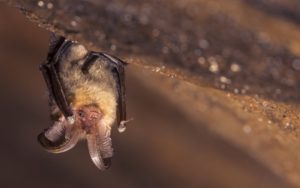
Brown Long-eared Bat

